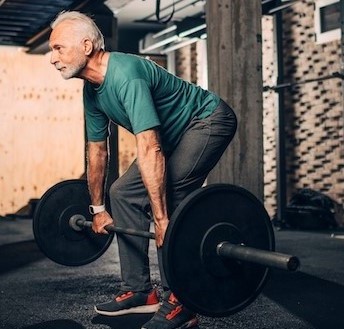A recent study, the START trial, followed 377 people, and compared the results from high intensity strength training, low intensity strength training and a control group. The results were a little controversial and may surprise you!

A recent trial looked at the effects of high intensity strength training for people with knee osteoarthritis (OA). Most guidelines for managing OA espouse the benefits of strengthening to manage the symptoms and they theorized that high intensity strength should give the best results over low intensity training and a control group.
The results were somewhat controversial, with the study showing no significant difference between the groups after 18 months of intervention in their self-reported knee pain and dysfunction. This has led some to claim that the trial showed no evidence of benefit of high intensity strength training in knee OA, which is somewhat inaccurate and misleading.
What the study did in fact show was that each of the 3 groups made significant improvements in their pain and dysfunction and decreased medication use. Despite greater improvements in strength, it is true the high intensity group did not outperform the others, possibly challenging some long held beliefs regarding the direct correlation between strength and pain and dysfunction. Importantly however, ALL of the intervention groups significantly improved their strength over the course of the study.

One of the important differences with the control group in this study was the extremely high level of guidance and support they received. They received ongoing education and cognitive behavioural therapy in a group environment regularly throughout the 18 months to support important lifestyle changes including diet, weight loss and increasing their level of activity. This is quite different to the general education and advice approach taken in many other studies. Quite possibly the group environment and regular contact provided a level of accountability that accounts for the good outcomes achieved by those in this group.
The important take home message from this quality study should NOT be that high intensity strengthening is not of benefit, in fact the participants in this group made excellent improvements. The main message should be that there are many avenues of exercise and lifestyle changes which can have very positive effects on the symptoms of knee OA and ideally, we should look to fit the exercise approach to the person.
One thing should be quite clear, if you change nothing, nothing changes!! If you are struggling with osteoarthritis and would like guidance on a program to get you back in balance, contact the practice to speak to one of our highly qualified therapists.
Article by Jim Burke
